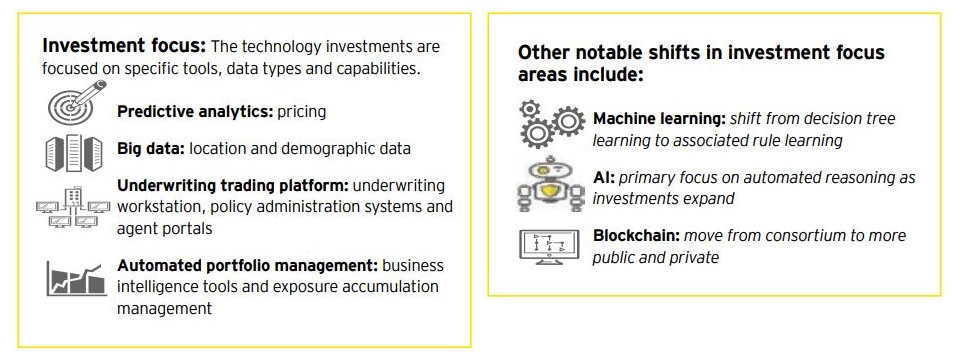Rescue Insurance Policy Administration with AI & Process Automation
Blog: Bizagi Blog
Don’t ditch your insurance policy administration legacy system just yet… it can be rescued.
Back in the 1970s, the insurance industry led by example. While other industries were struggling to get to grips with computers, insurers were pioneering information technology to work more efficiently and deliver better products and services to customers.
Digital transformation will help to continue this trend of productive working, yet the insurance industry has been slow to embrace digital. Established companies have invested years of time and money into their legacy systems, and as time marches by, the systems become more complex and it becomes increasingly harder to integrate new technology. It even becomes difficult to just operate efficiently as information becomes siloed in different systems.
“Technology is fundamental to the [insurance] industry,” says Morgan Stanley analyst Jon Hocking. “Part of the challenge is that they’ve got very complex legacy IT infrastructure. Turning it all off and switching to a new system is tough to do.”
But you don’t have to turn it all off if you want to update your legacy systems…
Take an agile approach to updating your PAS
The more new features and technology you can integrate with your PAS, the more efficient all your processes will be. It’s no wonder then that nearly two out of three insurers are looking to modernize their PAS.
But rather than taking a ‘rip and replace’ approach, why not just build on what you already have? You can add the appropriate tech to address individual problems. More than half of respondents to EY’s Digital Underwriting Survey said that they were rolling out new technologies, including AI and RPA. By taking an agile approach, you can ensure that you’re always up-to-date and integrate as and when you need.
Technology moves at such a fast pace of change; an agile approach makes sense. PAS implementation takes time, so by the time you have completed your project to update your legacy system, it may already be out-of-date. You will constantly be commissioning long-winded projects to keep up with your competitors. But by integrating secure service-orientated layers to address the legacy nature of your PAS, you can future-proof your digital investment and stay one step ahead of the competition by being able to quickly assimilate any new features.
(Image from EY Digital Underwriting Survey)
Combat the competition with integrated, automated applications

Emerging insurtechs are posing a problem for the established, incumbents of the insurance industry. Some of the larger businesses may just buy out the start-ups and capitalize on their technology, but they still need to integrate this new tech and information with their own systems.
If established companies and brokers don’t want to become outdated, they need to integrate emerging technologies to deliver optimal business results and remain competitive.
“With the Internet of Things, there is the chance to mitigate risk in real time. There is an opportunity here for the bigger insurers, but there is an argument that the whole industry shrinks. Those who aren’t at the leading edge will face outsize losses,” says Hocking.
With advances such as real-time risk management and process automation, there is an opportunity to offer a better service by spending less time operating technology and more time underwriting and providing customer service.
The great advantage of using a PAS is that so many admin tasks and batch jobs have been modernized to background functions. As you integrate more features, you can automate more processes in your workflows. This frees up more time for insurers to spend providing a better customer experience.
(Image from EY Digital Underwriting Survey)
Make your information centralized and compliant
Your PAS will be a complex, highly integrated system. But it’s likely that it’s become siloed over the years with various iterations. The insurance industry is built on information, so it’s vital to have a logistical view of all the transactions occurring within your business.
By creating a centralized repository that accesses information from all sources via APIs, users spend less time looking for appropriate details for policies and underwriting when they come to finalizing quotes. This ensures that information is accurate and offers the potential for higher ROI as employees can process more quotes in the working week.
With so many moving parts within the policy admin process, it can be hard to ensure that you are always meeting regulatory compliance, which is tighter than ever. A digital process automation (DPA) approach means that all data and risk information is recorded, versioned and ensures each step of the underwriting and review process are completed in line with internal and external guidelines and regulations. This means that you never have to worry about adhering to regulations as it’s all automated. And when the auditors come knocking, you can prove your compliance at the touch of a button.
Process Automation in action
FTSE 100 company Old Mutual, an international investment, savings, and insurance group embarked on a business transformation initiative with one aim: to put the customer first. The starting point was to reduce the customer waiting time across the branches and enable sales advisors to recommend relevant products or services.
They wanted to deliver a 360-degree view of all customer interactions across all channels to create a single version of the truth. By tightly integrating with back-office systems, they were able to provide advisors with all the relevant information needed to make quality decisions, allowing customers to be served instantly.
This resulted in experiences front desk advisors being redeployed elsewhere as integrated BPM-based systems could support intelligent decision making. Old Mutual also saw a reduced number of escalations to the back office related to customer data and consistent, improved customer experience across all channels.
Visit our website to find out more about how Bizagi helps insurers to transform their operations with a digital business platform to optimize customer experience, digital operations, and regulatory compliance.
If you’d like to find out more about how Bizagi is helping businesses to accelerate their digital transformation initiatives, why not register for our global community conference on October 16-18, Bizagi Catalyst 18.
This event will bring together a range of inspirational speakers, leading industry analysts, successful business leaders and Bizagi experts. We’re especially excited to have the multi-talented Guy Kawasaki joining us. Click here to find out more about the exciting agenda and beautiful Miami venue.

The post Rescue Insurance Policy Administration with AI & Process Automation appeared first on Bizagi Blog – Ideas for Delivering Digital Transformation.
Leave a Comment
You must be logged in to post a comment.








